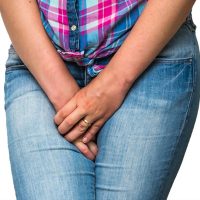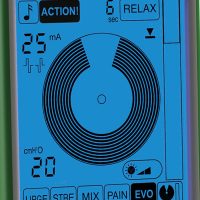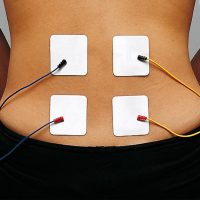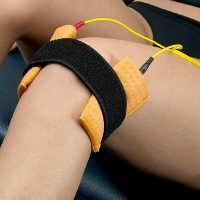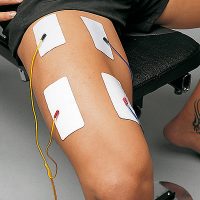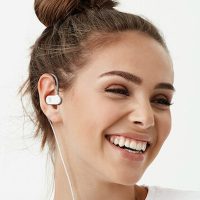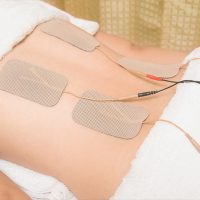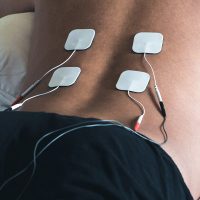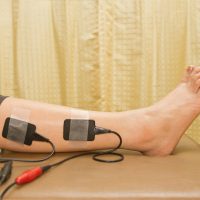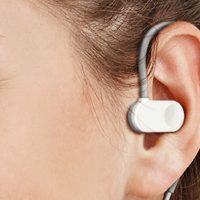Electrotherapy
Electrotherapy is a collective term encompassing all treatments performed using electric current. The best-known types include TENS, EMS, MENS, iontophoresis, and interferential therapy.
Although all use electrical impulses, their operation and effects differ. Just as a spoon, knife, and fork are all eating utensils but serve different purposes. There are simpler and more affordable devices that provide only one type of current or treatment—for example, only TENS, only muscle stimulation (EMS), or only iontophoresis.
Today, most electrotherapy devices are multifunctional, offering multiple types of electrotherapy treatments. Generally, the more complex the device, the more expensive it is, but it can treat a wider range of conditions.
A more expensive device isn't necessarily better for you, as many treatment programs may be unnecessary for your case. Expensive devices include treatment modes that a physiotherapist treating multiple patients might use. For example, the Genesy 600 or 1500 devices with denervated muscle treatment programs are only needed if you intend to treat peripheral muscle paralysis.
If your aim is only pain relief or muscle strengthening, there's no need to purchase a device with the most programs, as the effectiveness does not depend on this!
Before purchasing a device, check which treatment types and functions you need and decide accordingly!
Electrostimulator devices have been successfully used in physiotherapy for decades.
Watch Dr. Zsolt Zátrok’s video about electrotherapy methods applicable in home settings.
Types of Electrotherapy
Main electrostimulation procedures
- TENS - Transcutaneous Electrical Nerve Stimulation: a drug-free and side effect-free method for alleviating physical pain.
- EMS or NMES - electrical muscle stimulation: used in sports and musculoskeletal rehabilitation treatments.
- Denervated or selective current: a method for treating paralyzed muscles that have lost their motor nerve supply.
- FES - Functional Electrical Stimulation: specialized treatment for certain conditions.
- TES - Threshold Electric Stimulation.
- Iontophoresis: used to deliver active substances into deep tissues.
- Tap water iontophoresis: a procedure for treating pathological palmar, plantar, and underarm sweating.
- Microcurrent (MENS): a very low-intensity pain relief and healing treatment.
- Kotz (Russian): a mid-frequency institutional treatment for muscles.
- Interferential current: a versatile treatment for pain relief, edema reduction, and healing, mainly for institutional use.
Let's look at these in more detail.
TENS (nerve stimulation)
A pain-relieving method where treatment impulses "suppress the pain stimulus," thereby temporarily eliminating symptoms. This treatment type has little to no healing effect, does not act on muscles, and "only" reduces pain temporarily. Its advantage over medications is that it doesn't poison you and has no side effects.
The pain reduction effect of TENS is noticeable during treatment and lasts for several hours afterward.
EMS / NMES (muscle stimulation)
The two abbreviations EMS (Electric Muscle Stimulation) and NMES (NeuroMuscular Electric Stimulation) refer to the same method.
This method is for treating muscles with healthy motor nerves.
It is not suitable for muscles affected by so-called peripheral paralysis! Such cases require selective current (denervated) treatment, as described below.
EMS effects depend on the treatment program settings. Different stimulation is needed for muscle relaxation, strength improvement, or postoperative recovery acceleration. Muscle contractions can increase blood circulation by up to 300%, improving circulation and promoting healing. It indirectly relieves musculoskeletal pain – muscle-origin pain relief may be stronger than TENS.
It's excellent for situations requiring restoration of muscle strength, mass, posture, and function. Examples include incontinence, muscle atrophy, herniated discs, lumbago, sciatica, varicose complaints, peripheral artery disease, muscle pain, neck/back/waist/knee and other muscle pains. It helps relieve muscle stiffness in central paralysis, Parkinson's, ALS, multiple sclerosis, etc. It accelerates relearning movement post-stroke.
Muscle strengthening takes time. If a single stimulation session was enough, athletes would simply use it before big events. Muscles strengthen with regular contractions, so stimulation should be applied once or twice daily. Improvement is noticeable after 2-3 weeks, and treatment should persist for 2-3 months. Some conditions (paralysis) may require years of use.
Some treatment types have distinct names but essentially represent specific applications of muscle stimulation.
Threshold electric stimulation (TES).
Very low current intensity muscle stimulation applied over several hours, which does not cause visible or perceivable muscle contractions but has beneficial effects on overall muscle condition.
Functional electrical stimulation (FES).
This refers to muscle stimulation aimed at regaining lost abilities. For instance, treating urinary or fecal incontinence is a well-known form. It also includes eliminating stiffness after cast removal following bone fractures or restoring muscle strength weakened by severe illness.
Selective current (denervated muscle stimulation)
A method for treating muscles with damaged motor nerves — so-called denervated muscles. Peripheral paralysis caused by injury during trauma or surgery, herniated discs, spinal fractures, vertebral stenosis, and similar conditions may lead to this. Facial nerve paralysis, often developed after a cold, also induces such a state. Denervated muscles do not respond to normal EMS! Therefore, a special impulse configuration is required. Moreover, nerve repair is very slow, usually taking months, often years. If the muscle isn't treated electrotherapeutically during this time, it deteriorates. Even if the nerve regenerates, it won’t find functional muscle. Hence, continuous (up to 2-3 times daily) stimulator usage is necessary in peripheral paralysis.
Strengthening denervated muscles takes a very long time. Initial positive signs usually appear only after several months, with treatment possibly needed for over a year.
You need a selective current treatment device only if you want to treat denervated muscles affected by peripheral paralysis.
Microcurrent (MENS)
Microcurrent provides more effective pain relief than TENS and has healing and regeneration-promoting effects. It is used for all inflammations, muscle, and ligament injuries. Excellent for treating osteoarthritis, arthritis, carpal tunnel syndrome, tennis and golfer's elbow, frozen shoulder, rotator cuff inflammation, neck-back-waist pain, lumbago, sciatica, sciatic nerve inflammation, piriformis syndrome, hip pain, knee pain, Achilles tendon, plantar fascia inflammation, and heel spurs.
It stimulates healing processes in inflammation, but the effect develops slowly over weeks. These conditions often cause complaints lasting years, so several weeks of persistent microcurrent treatment is relatively short compared to disease duration.
Microcurrent stimulates the body’s self-healing processes, so minimal results are expected from a single session. At least 40-50 treatments are necessary. Treatment should be daily; interruptions require restarting the entire course.
Iontophoresis
Iontophoresis uses direct current to transport charged particles of active substances into the treatment area, bypassing the digestive system. Thus, the medicine reaches the targeted site immediately, avoiding the "loss" typical with oral medication (which is digested, absorbed by intestines, enters the bloodstream, and only a fraction reaches the intended site, e.g., an injured ankle).
The method exploits electrical charges moving between positive and negative electrodes placed on each side of the joint. The current flows through the joint, carrying medicine into its interior.
Treatment must be administered as a course, with at least 10 sessions needed to see effects.
Tap water iontophoresis: A special form of iontophoresis highly effective in treating pathological sweating of the palms, soles, and underarms.
Kotz (Russian)
Kotz therapy uses special mid-frequency electric currents that penetrate deeply into muscles. This stimulation targets muscle fibers, promoting contractions similar to natural muscle activity.
The therapy's primary effect is increasing muscle strength. It also improves muscle endurance and accelerates post-injury recovery.
It enhances communication between muscles and the nervous system, aiding motor control improvements, especially in rehabilitation after injuries.
Interferential
Interferential (IF) therapy is a form of electrical treatment primarily used for pain relief, muscle relaxation, and to stimulate blood circulation and healing processes.
IF treatment uses medium or high-frequency currents delivered through two channels to various points on the body. These currents intersect inside the body and interact, creating "interference."

